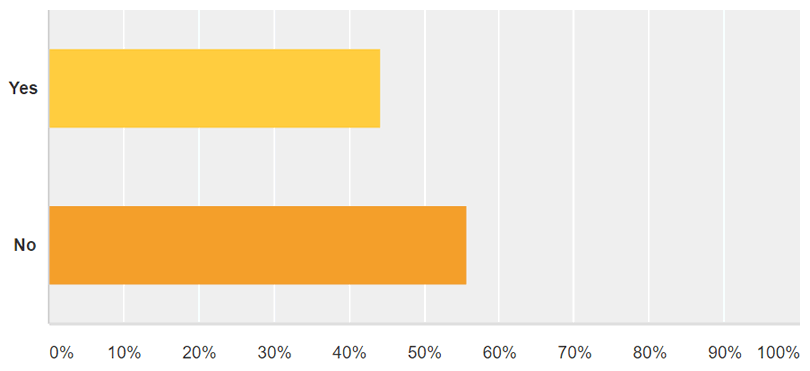According to the November LANDTHINK Pulse results, a surprising 55.82% of respondents do not think states should implement a required boundary survey when land changes ownership. Licensed land surveyors offer several different types of surveys depending on what it will be used for, and they service different industries like real estate, construction, and environmental. Boundary surveys are an assessment of an landowner’s entire property conducted by a licensed surveyor for the purpose of determining exact property lines as described in the deed.
In an article published on LANDTHINK titled “Does a Buyer Need a Survey for Country Property?”, Curtis Seltzer, land consultant and author, thinks that earlier recorded surveys usually prove to be accurate and competently done. Surveyors typically use deed plotting software that calculates closure and acreage and will establish any discrepancies and alert them to possible error. Seltzer does go on to say that “A buyer should not need to repeat a recent recorded survey.”
Over half of our respondents agreed, and are willing to take the risk associated with not having a new boundary survey done when taking ownership of land, like the fact that a buyers’ rights in the property may not be what he or she thinks they are.
Last month, the November Pulse asked: Should states require a new boundary survey when land changes ownership? The results of our informal online survey reflected that our audience was relatively divided on the issue of state-required surveys; 55.82% of our audience answered “NO”, not seeing any usefulness coming from states implementing a requirement. Only 44.18% of respondents answered “YES”, indicating they thought having a new “mandatory” boundary survey completed each time land changes hands might protect buyers.
There are many professionals that do not recommended using an old survey. Sometimes land buyers don’t have a choice in the matter; lenders and title companies often require a boundary survey when land is purchased. There are a lot of things that might have changed since the last survey was conducted. Even if there have been no changes to the boundary lines, the way in which a property is used can change. For instance, old easements can be vacated or a prescriptive easement could have been created, or the owners of any adjacent land could have constructed structures that might infringe on the property lines.
Trying to avoid the cost of a new boundary survey can prove to be more costly in the long run. New buyers are left with with little to no legal recourse should any issues arise with an old survey.
The information in this post regarding the results of our survey should not be considered legal advice. Buyers, sellers, real estate agents and title companies should consult an attorney for legal advice on all property survey matters.
Here are the final results:

- 44.18% said YES, states SHOULD require a new boundary survey
- 55.82% said NO, states SHOULD NOT require a new boundary survey
Thank you to everyone who participated and shared the Pulse with friends and connections in the land industry.
With more people spending time online during the holiday season, sponsorship of the Pulse is a great way to ensure your brokerage is the first one buyers and sellers call when they have a need to buy or sell property. Leveraging our entire network of web and social media sites could have your name resonating online during the heavy internet traffic period of the holidays. Pulse sponsorships are offered on a first come first served basis and are subject to certain limitations. If your business would be interested in sponsoring the first Pulse question of the New Year, please contact us soon.
Do you have a suggestion for next month’s Pulse question? Submit your question here and we might choose yours!
What effect will a Trump presidency have on the land industry? We’d like to know your opinion! Click here to answer the December Pulse question.
This content may not be used or reproduced in any manner whatsoever, in part or in whole, without written permission of LANDTHINK. Use of this content without permission is a violation of federal copyright law. The articles, posts, comments, opinions and information provided by LANDTHINK are for informational and research purposes only and DOES NOT substitute or coincide with the advice of an attorney, accountant, real estate broker or any other licensed real estate professional. LANDTHINK strongly advises visitors and readers to seek their own professional guidance and advice related to buying, investing in or selling real estate.










I purchased land in the San Luis Valley. It seems the land is mostly bought as an investment as few people actually live out there. However this will not be the case for me. The county is strict when it comes to water usage. The area get less than 10″ of rain but it is close to the Rio Grande River. I decided to get a new survey after talking to the county even though the area seems to be already thoroughly marked off. My surveyor found a discrepancy and it appears my neighbor has encroached on my land with his driveway leading to a common road allowing access to several other properties. I asked the county if I could purchase a survey and was told there was none for the property adjacent to mine. I find this surprising. I wanted a clear picture of my boundaries but I felt I needed to look at what my neighbor thinks is his boundaries before I confront them. Am I going about this wrong. My surveyor is well know and respected by the county. What should be my next move.